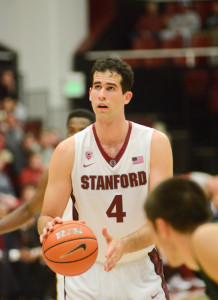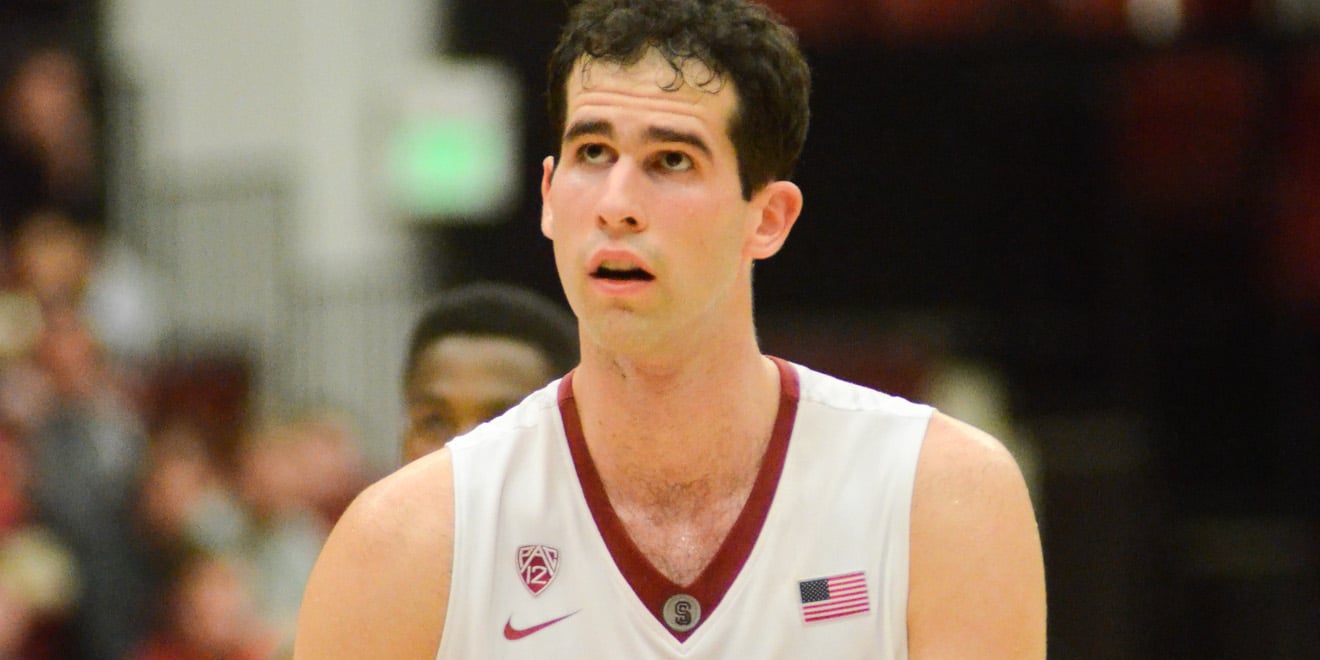Stanford basketball has now lost four of its last five games, including a blowout loss at Utah and a loss at Colorado for a road sweep in the mountain states in the team’s most recent weekend set. What once looked like a solid NCAA tournament berth for Stanford now seems like a toss-up at best, with both Chasson Randle and Anthony Brown suffering ice-cold shooting stretches from the floor. We asked basketball writers Andrew Mather, Irving Rodriguez and Sanjay Srinivas: How can the team make up for Randle and Brown’s slump? Is this still a tournament team?
Sanjay: Injuries to Rosco Allen and Grant Verhoeven have exacerbated Stanford’s existing depth issues. Chasson Randle and Anthony Brown rank third and sixth in the Pac-12 in minutes per game, and their fatigue is starting to show.

Delon Wright and the stingy Utah defense gave Randle all kinds of trouble in the second half of Thursday’s game, turning most of his dribble-drives into contested jumpers. Brown has struggled with consistency after seemingly being hot the entire first half of the season. If Stanford doesn’t know what it can get from Brown on a game-to-game basis, its tournament odds look bleak.
Until this stretch of five games, it seemed that Stefan Nastic, Randle and Brown would be able to overcome the serious flaws of this Stanford team. However, when Brown and Randle aren’t at their very best, the offense starts to look stagnant, with infrequent passes and lackluster movement off the ball.
On defense, Stanford looks particularly vulnerable in the post, especially as they gave up 18 offensive rebounds to Colorado. While the Cardinal have done a decent job containing scoring forwards like Utah’s Jakob Poeltl and UCLA’s Kevon Looney, opposing guards have been able to drive to the basket at will. These drives, caused by poor defensive rotations, often result in fouls called on Nastic or freshman Michael Humphrey, putting further strain on an already depleted bench.
Stanford still has the talent to make the tournament. Along with the Cardinal’s three stars, sophomore Marcus Allen, freshman Reid Travis and Humphrey have shown promise over the course of the season. At his best, Allen plays with high energy on both sides of the ball, and his constant motion helps space the floor for Stanford. Travis has returned slowly from his leg injury, but his physical presence and rebounding ability should plug some holes in the leaky Cardinal defense. Humphrey earned starting time in both the Colorado and Utah games, showing flashes of a mid-range game while helping Nastic anchor the defense in the post.
Despite the development of Stanford’s young players, Brown, Randle and Nastic were responsible for 42 out of the Cardinal’s 57 shots against Colorado. In the first half of the season, the three seniors made many of those shots. Faced with fatigue down the stretch, Stanford needs to be able to rely on its secondary players to shoulder some of the load on offense and stay disciplined on the defensive end. If not, the Cardinal may be looking at the chance to win its second NIT title in the last four years.
Irving: The Cardinal offense will be just fine. Anthony Brown was shooting threes at a tremendous .463 clip leading up to the UCLA game on February 5th. Chasson Randle was rarely ever taking long jumpers; he would either orchestrate an open three for himself or work the pick and roll for a shot in the paint. In the midst of tough conference play, teams are running them off the 3-point line and easy looks are harder to come by. They have the skillset and talent to adjust, just as opposing defenses have, and the offense will be there in the end.
The defense is much more worrisome. Through the first 17 games, Stanford was 13-4 (4-1 in Pac-12 play) with signature wins over Texas and UConn. They only gave up 63.7 points per game, one of the top 75 marks in the country. In the last eight games, the Card are 3-5 and have given up an astounding 74.1 points per game. A piece of that figure can be explained away by the better competition in that span (Arizona, UCLA and Utah) but there are still some alarming concerns on the defensive end.
In particular, Stanford is exerting little to no effort in stopping transition baskets and second-chance points. Opponents have been able to get handfuls of uncontested layups and dunks in each of Stanford’s last five games, including in the win against USC.
Malik Martin had three open dunks in transition in that game; one of them came with just over two minutes remaining in a 4-point game. The Cardinal also ceded 18 offensive rebounds to Colorado, leading to 14 second chance points.
This correctable flaw can quickly turn a successful March sour. With a strong run in the Pac-12 tournament, Stanford is certainly March Madness worthy. The window is closing, though. They sit at fifth in the Pac-12 and have five games left in the regular season. The Cardinal need to tighten up its lackluster defense and find its offensive groove if it wants to end up on a bracket in a few weeks.
Andrew: Late-season slumps have seemed almost a given for Stanford in the last few years. From the surprise losing streak that nearly lost Stanford its NCAA tournament berth last year to the home sweep of the Cardinal by the Los Angeles schools two seasons ago, there have often been stretches where it seemed easy for opponents to sneak by Stanford as it attempted to solidify its position down the stretch. In some senses these slumps are surprising, especially when considering the team’s ability to turn things on in the postseason (such as in its 2012 NIT Championship run or its 2014 upset of No. 2-seeded Kansas.) In other senses, however, they seem utterly predictable and almost inevitable given the Cardinal’s tendency to descend to the level of their competition until they absolutely have to pick things up a notch.
Too many times, both during this season and in the past, the Cardinal have relied on big, emotional comebacks, even against second-tier teams, to boost up the number in the W column. There isn’t anything inherently wrong with this strategy early on in the year, but it grows considerably more difficult as the season starts to stretch into February and March. Opponents gradually start to solidify their defense as conference play progresses, and teams come out with more intensity as they attempt to end their seasons with a cherry on top. Stanford has certainly felt the adverse effects of this increased preparation in its last five games — the Cardinal have trailed in all of them and put up legitimate comeback efforts in four, but opponents were able to rebuke the team’s efforts in all but one of them.
Fortunately, Stanford’s schedule is reasonably accommodating to helping the team regain its own intensity and put on a display for the selection committee when it matters most. The Cardinal enjoy a bye this week, a good chance to rest overworked stars Chasson Randle and Stefan Nastic, then enter a three-game homestand in which they should be a favorite (albeit a narrow one) in every game. If Stanford can manage to come out on top of these matchups, it would likely give the team an RPI ranking in the low forties and a little bit of momentum to take into the Pac-12 tournament. This should be enough to push the Cardinal over the hump and show the nation that it again has what it takes to continue its season late into March.
Contact Sanjay Srinivas at ssri16 ‘at’ stanford.edu, Irving Rodriguez at irodriguez ‘at’ stanford.edu and Andrew Mather at amather ‘at’ stanford.edu.
